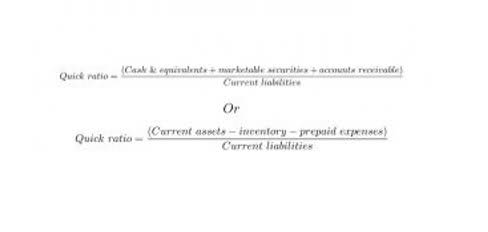Blog
What Is CIP Accounting? A Guide for Construction Teams
- June 21, 2024
- Posted by: admin
- Category: Bookkeeping

In addition to knowing what construction in progress accounting is, you should also know what’s involved when recording the account. Like previously stated, the construction in progress account has a natural debit balance. Construction in progress accounting is one of the essential categories for construction firms to track. In this entry we will discuss what construction in progress accounting is, how to properly record it, and provide an example of what it may look like in your books.

eSUB CONSTRUCTION BLOG

When the construction in progress is completed, related long-term asset account is debited and CIP account is credited. Construction in progress accounting, also known as CIP accounting, monitors, and records costs, revenues, and expenses of construction projects from their start until completion. When construction companies and contractors maintain detailed accounting records, they can accurately reflect the financial status of a project. CIP accounting also ensures transparency with clients and helps a company make effective decisions that affect the bottom line. Another significant aspect of managing CIP in a multi-project environment is maintaining accurate and up-to-date financial records. Each project must be tracked individually to ensure that costs are correctly attributed and financial statements reflect the true state of each project.
Journal Entries For Construction In Progress
As the construction progresses, the company continues to accumulate costs and updates the CIP account accordingly. Once the building is completed and put into service, the costs recorded as CIP are transferred to the “Property, Plant, and Equipment” account. From that point forward, the building will be subject to depreciation over its useful life. In the world of finance and accounting, numerous acronyms are used to describe various concepts and processes. CIP, which stands for Capitalized in Progress, is one such term that plays a crucial role in financial reporting. Whether you are a student, a business owner, or a finance professional, understanding the meaning and implications of CIP is essential.
- It is an accounting term used to represent all the costs incurred in building a fixed asset.
- By tracking project costs in real-time, businesses can identify budget overruns early and adjust accordingly.
- Percentage of completion (PoC) is an accounting method of work-in-progress evaluation, for recording long-term contracts.
- For example, completing an office complex transfers accumulated CIP costs to a “Buildings” account under PP&E.
- To simplify it, the CIP account is just an account that records all the different expenditures during a construction project.
- If the business is building assets under contract to sell, they are inventory assets.
New Jersey Office (Main)
- Expenses that are not specifically tied to the asset should be expensed in the accounting period they occur.
- Lenders providing permanent financing base the loan value on the balance shown in the CIP account.
- With various teams working on different projects, ensuring that everyone is on the same page can be challenging.
- One effective method for tracking these costs is through the use of specialized construction accounting software.
- Construction-in-progress accounting is used to track the progress of projects still in construction.
- GAAP allows another method of revenue recognition for long-term construction contracts, the completed-contract method.
- Construction auditors must adhere to the Generally Accepted Accounting Principles (GAAP) and International Financial Reporting Standards (IFRS) guidelines.
These platforms provide real-time data, enabling project managers to monitor expenditures closely and make timely adjustments as needed. CIP accounting is a pivotal process for businesses handling construction or asset projects. This guide bookkeeping and payroll services will break down its meaning, importance, and practical applications while addressing common challenges and solutions. Whether you’re a contractor, financial manager, or accountant, understanding CIP accounting ensures accurate financial reporting and effective project cost control.

Global shipments and shipments within Europe to/from non-EU countries are subject to customs obligations. So, while items are booked when money changes hands with cash basis, items are booked when an invoice passes hands with accrual basis. Each method tells a different story about revenue, but neither method gives the whole story – that’s where the work in progress (WIP) method comes in. Here is an example to help you visualize what construction-in-progress may look like in your accounting books. In this guide, we’ll break down what construction-in-progress (CIP) accounting is, why it’s important, and how to implement it effectively. Expert insights and tips on accounting, financial strategies, and industry trends.
Tracking costs in CIP accounts helps monitor project expenses closely, identify potential budget issues, and make necessary adjustments early. This proactive approach supports better budgeting and financial planning for future projects. Construction-work-in-progress accounts can be challenging to manage without proper training and experience. Most cip accounting companies hire a chief financial officer to maintain these records and avoid costly accounting errors. By tracking project costs in real-time, businesses can identify budget overruns early and adjust accordingly.

- Projects spanning multiple accounting periods complicate expense tracking and reporting.
- This also applies to the costs incurred for any further transportation of the goods.Seller obligations under CIPMost obligations under Incoterm CIP are for the seller.
- Companies track one or more construction projects under the CIP heading until construction is complete.
- We offer dynamic checkboxes on our pricing page to help you estimate costs based on the services you require.
- Effective communication and collaboration are also paramount in a multi-project setting.
- The CIP balance also includes land acquisition costs and legal fees directly tied to purchasing the property or negotiating construction and related agreements.
If the financial statements have ‘construction in progress or process’ under the head of PP&E, it is a ‘build to use’ asset. Whereas, if the account appears under the heading of ‘Inventory and assets,’ it is probably a ‘build to sell’ asset. According to the matching principle of accounting of accrual accounting, the expenses related to certain revenues must be recorded in the same period when they were incurred. WIP reporting also supports strategic decision-making related to pricing, project bidding, and capacity planning. Understanding production costs and timelines allows businesses to set competitive pricing strategies aligned with current market conditions and internal cost structures.
It’s a method a construction company uses to record and report financial transactions and progress from beginning to end. It’s also crucial when a company needs to secure bank loans, demonstrate bond capacity, and receive audit and assurance services. fixed assets The presence of Construction-in-Progress (CIP) on financial statements can significantly influence a company’s financial health and performance metrics. CIP is recorded as an asset on the balance sheet, reflecting the investment in ongoing projects.
